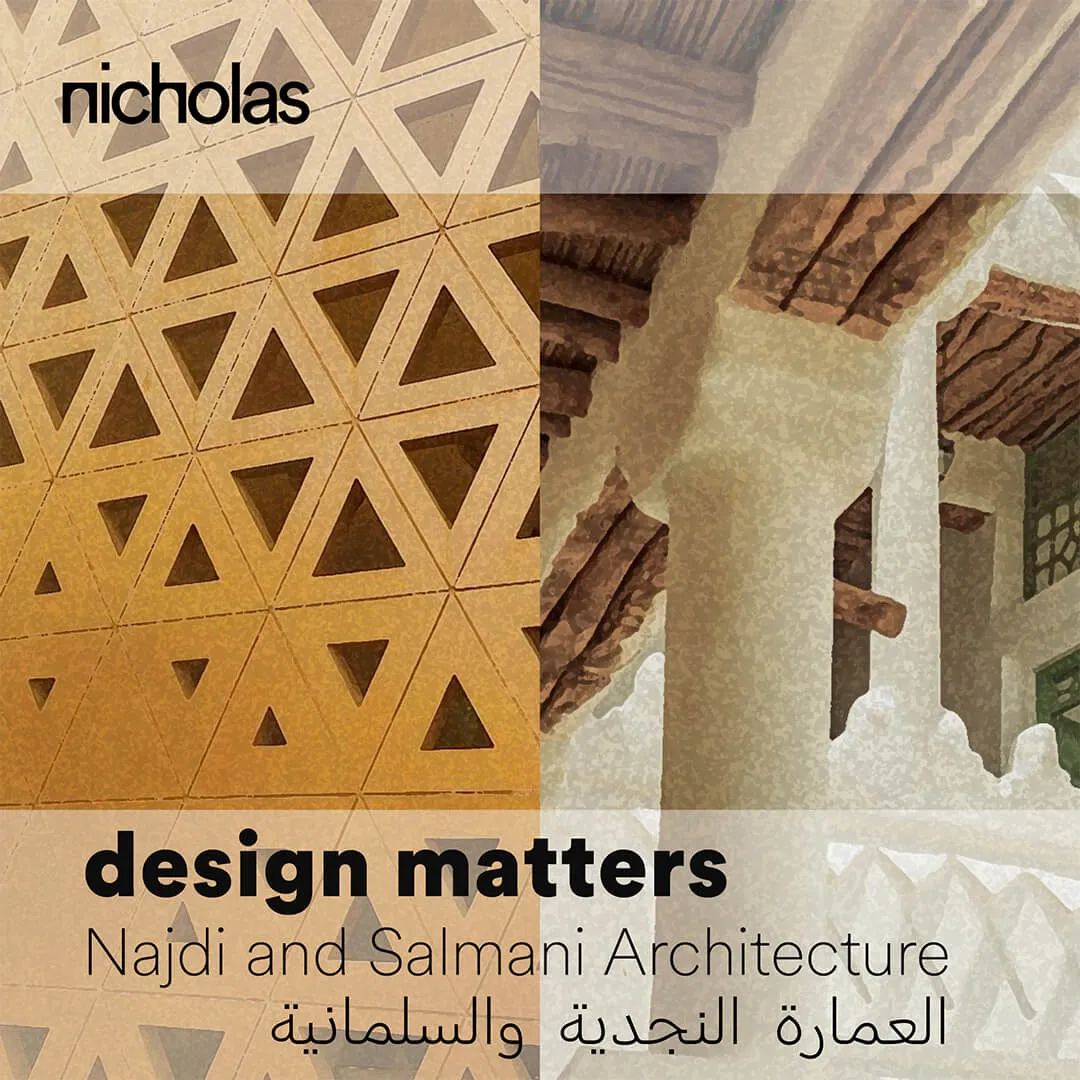
Najdi architecture
(العمارة النجدية) is a vernacular style indigenous to the Najd region of modern-day Saudi Arabia which flourished between 13th and 18th centuries. It is known for its desert adaptive urban patterns with low-contour earth-structured mudbrick buildings.
It is characterised by elements such as triangular or rectangular openings (furjat) and battlements (shurfat) as well as peepholes projecting outwards from the main façade (tarma). The presence of a central courtyard and open spaces also forms a distinct part of the architectural expression.
The influence of the Najdi style can be seen as far afield as neighbouring countries, such as Kuwait and inland Qatar.
Salmani architecture is, by contrast, a contemporary evocation of the Najdi architectural past. It derives from the vision of King Salman Bin Abdulaziz Al Saud, who has sought to preserve Saudi Arabia’s national identity by championing historicist expression in current forms of development and urbanism.
The Salmani architectural style, which has become a hallmark of design in the city of Riyadh, blends traditional and modern elements. It prioritises the preservation of cultural heritage within the current development model, striking a balance between old and new.
Salmani architecture is functionally modern whilst being stylistically inspired by Saudi heritage. Its existence has been formalised through the King Salman Charter for Architecture and Urbanism
(ميثاق الملك سلمان للعمارة والعمران).